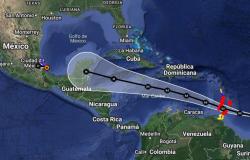The European Securities and Markets Authority is set to push financial regulators in the EU to scrutinize ‘pre-close calls’ following a series of volatile trading sessions last year.
Pre-close calls are a long-standing practice among large European companies, in which they offer guidance to analysts ahead of the blackout period before they issue their results.
This has always been viewed as something of a “gray area” according to the head of a European investment bank who declined to go on record.
However,some believe it gives an unfair advantage to a select group of investors who happen to receive analyst notes based on the calls. Financial News has so far identified five instances of sharp stock movements and volatile trading activity around the time of pre‑close calls taking place.
READ Trading heads face big questions in 2024
Traders, analysts and lawyers contacted by F.N. have called for closer scrutiny of pre-close calls.
The FIA European Principal Traders Association, which represents European market-makers, is one group calling for regulators to crack down on pre‑close calls.
“We do think that this warrants regulatory or supervisory attention,” said the association’s secretary general Piebe Teeboom.
“The principle that underlies our comments is that if you share something that is non-public information and price sensitive, or it turns out to be, the next step needs to be: ‘Okay, I need to disseminate this widely to the public at large’,” he said. “People may have the right mindset of ‘I’m not going to disclose anything that I shouldn’t’, but inadvertently, they might.”
An Esma spokesperson said that it would encourage national watchdogs to take a closer look at the practice.
Unexpected volatility
An 11.5% drop in the share price of sportswear firm Puma on 5 October 2023 was its biggest single-day fall in three years. The drop came around the same time as a pre-close call with analysts; no other news that would have impacted its stock emerged that day. Bloomberg attributed the slump to the call with analysts.
F.N. spoke with several analysts on the call, who said they were puzzled by the sharp stock fall.
“I was totally surprised by the share price move,” said one. “I didn’t get the impression they were saying anything new.”
“It was a lot of noise for minimal moves on earnings expectations,” said another.
Some analysts contacted by F.N. said that Puma simply reiterated its former guidance, signaling that it would hit the middle of expectations. A spokesperson for the firm declined to comment on the share price movement.
“We are fully committed to complying with general market practices and are constantly reviewing and refining our capital market communication,” the spokesperson said.
Puma is not the only company to be hit by unusual stock movements around the time these calls took place.
Carrefour’s stock closed down only 1.2% on 10 October — the day of its pre-close call — but it was the French supermarket giant’s most volatile trading day in 2023 and second highest in terms of volume, according to data from BMLL.
“We were surprised by the market reaction,” said Sébastien Valentin, head of investor relations at Carrefour. “We do it every quarter and this is the first time we’ve seen such a reaction.”
Valentin said only technical details, fuel prices and quarterly calendar impact were shared on the call.
“Nothing price-sensitive or information that could affect the valuation of the company was said. “We have guidelines that we follow.”
German sportswear manufacturer Adidas made its pre-close call on 9 October. That day saw a 4% jump in its stock price and trading volume was nearly double the year’s average.
A company spokesperson declined to comment.
READ LME court win affirms the broad powers of exchanges
Siemens also saw elevated activity during the period of its pre-close call on 27 September. Trading activity was up more than 65% above the average for the year, with the stock closing up 3.3%.
“As a regular process and in line with long-standing overall market practice, we conduct pre-close calls with the sellside analysts towards the end of each reporting quarter,” a Siemens spokesperson said. “The purpose of pre-close calls is to provide primarily sellside analysts an overview on key messages from previous communication events such as investor conferences.”
Hearing aid and headphones manufacturer GN Store Nord made its pre-close call on 29 March. Its stock rose 7.1% that day.
A spokesperson for GN said other market factors might have caused the volatility in the company’s stock: “At that point in time, our company saw some quite significant volatility in general due to our highly leveraged situation. “This meant that any positive (or negative) macro/market news flows in general doubled the effect on the share price.”
Pre-close calls under scrutiny
Several analysts pointed to a lack of consistency with pre-close calls. They noted that some of their peers were excluded from attending the calls, while some companies did not host them at all.
Companies are regularly in contact with analysts throughout the year, and what they can disclose to them is guided by the EU and UK’s Market Abuse Regulation. This tries to prevent insider dealing by setting out when and how they can share information.
“Whether it’s the pre-close call or a call one week before the blackout period, the same rules govern what they can or cannot say,” said Anders Balling, assistant director general at the Danish Financial Supervisory Authority.
MAR doesn’t require a company to host pre-close calls — but it also doesn’t prohibit them. Companies can choose how they organize them: some invite all, while others select a few analysts; some have one big call, while others have one-to-ones.
Issuers hosting these calls can only reiterate ‘publicly available’ information. For material to qualify as publicly available, it needs to be published in a readily accessible place such as its website or an exchange’s information service. Otherwise, the material may be considered inside information.
The company’s investor relations team will usually use a script for the call that its legal and compliance team has approved. However, it is a “tricky area” because what counts as price-sensitive or inside information can be very subjective, said one lawyer who specializes in market regulation but who declined to be named, citing client conflict.
“It’s one of the most frequent topics that people worry about,” they said.
READ Lawyers battle over whether NFT insider trading is criminal
MAR provides four criteria for judging whether something is insider information: it must be precise, non-public, related to an issuer and its securities, and have a “significant effect” on the price of those securities if made public. Material must meet all four to fall within the definition.
Tom Hine, director at law consultancy Cambitas and former general counsel of the London Metal Exchange, said that while meeting all four criteria will make material inside information, and therefore illegal, market volatility alone can be enough to warrant an investigation.
“It may well be a reason to try, particularly if it’s only certain companies [that] are seeing the spikes,” Hine said.
“If the market has a major spike in price, then it looks like your inside-information assessment was potentially wrong,” said the market regulation lawyer. “That’s the type of thing that companies worry about — that the regulator will be guided by what the market reaction was, rather than the technical assessment.”
For its pre-close calls, Puma has one-to-one calls with a select group of analysts. The huge decline in the company’s stock puzzled the wider market — some analysts with later pre-close calls said that as they waited for their turn, questions from clients and their trading teams were already coming in, asking what was happening.
Another analyst who was not chosen to be part of the pre-close call was even more confused by the price swing. It was only because media reports attributed the frenzy to the pre-close calls that they knew these were even happening, they told F.N..
Monitoring the market
A spokesperson for Esma said that issues around pre-close calls have been brought up in the past. For example, several respondents flagged the issue of selective disclosure when the regulator opened a consultation on MAR in 2019.
“In general, disclosure of inside information has to be made as soon as possible in a manner that enables fast access and complete, correct and timely assessment of the information by the public,” they added.
The DFSA’s Balling said pre-close calls were not currently being examined. But he added that they could be worth further investigation.
“What we haven’t looked into is if the time around pre-close calls is a [higher-risk] time. It would merit us taking a close look into what happens,” he said. “It asks the question whether this is something we ought to look more into.”
A spokesperson for BaFin said the German financial regulator would not comment on individual cases. French financial regulator Autorité des Marchés Financiers also declined to comment.
FIA EPTA’s Teeboom said the practice leaves market makers “catching a falling knife”, as they trade on price signals rather than fundamentals.
“Market-makers will always be the last ones picking up on these types of rumors that other people are trading against,” he said. “We like a situation where all relevant information is embedded into the price, on the basis that the dissemination of information is as wide as possible so people make rational decisions.”
READ Executives face scrutiny over prearranged trading plans
Teeboom added that spreads could widen if market-makers feel they need to protect themselves.
Valentin said Carrefour had no plans to change how it conducts pre-close calls, but it remained a possibility.
“For the moment, no decision has been made — we’re contemplating options. Putting the [numbers] online is something that we could do,” he said.
Valentin added that he hoped 10 October was a one-off.
“We will not be happy to see this replicated.”
To contact the author of this story with feedback or news, email Jeremy Chan






